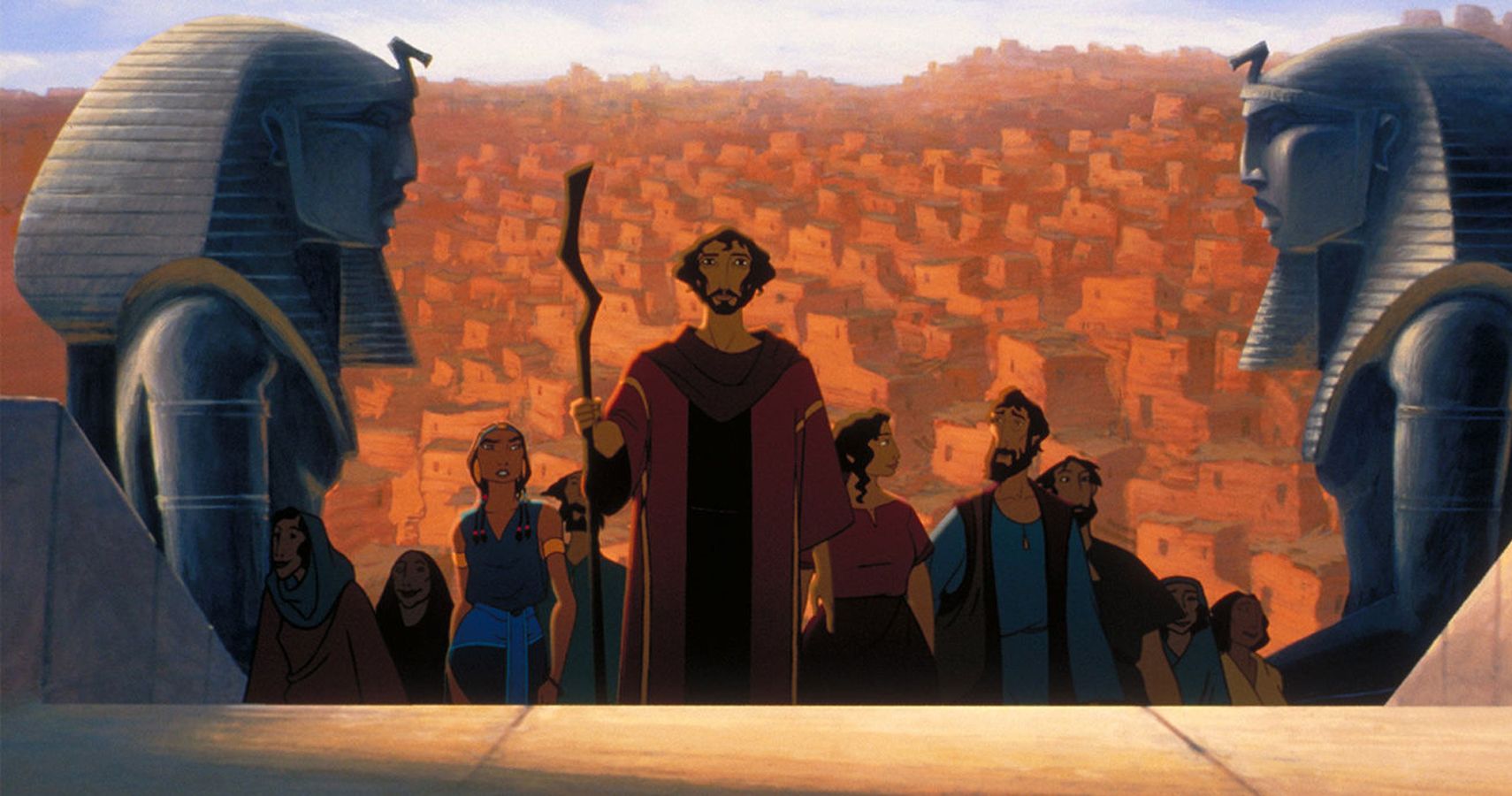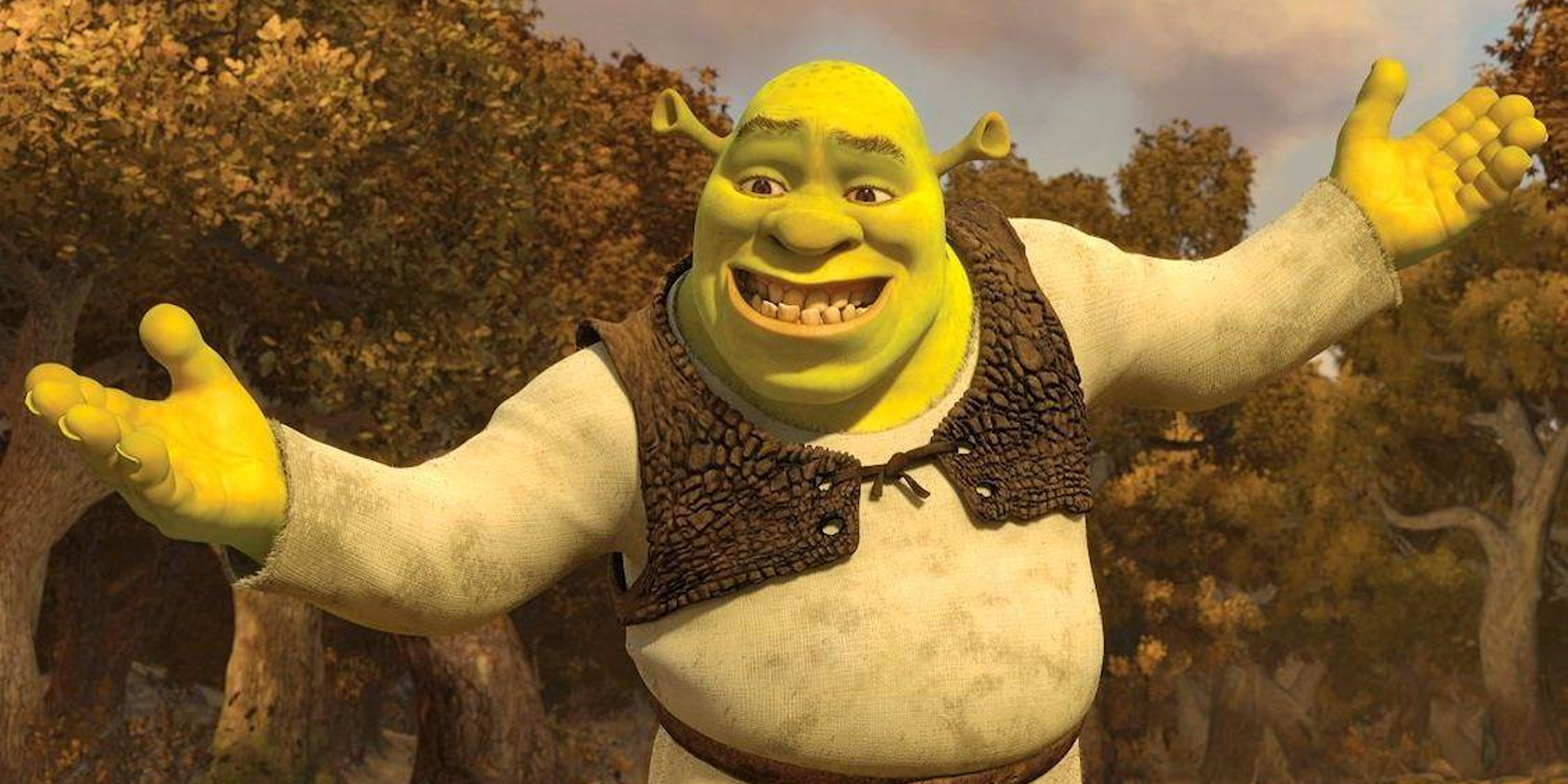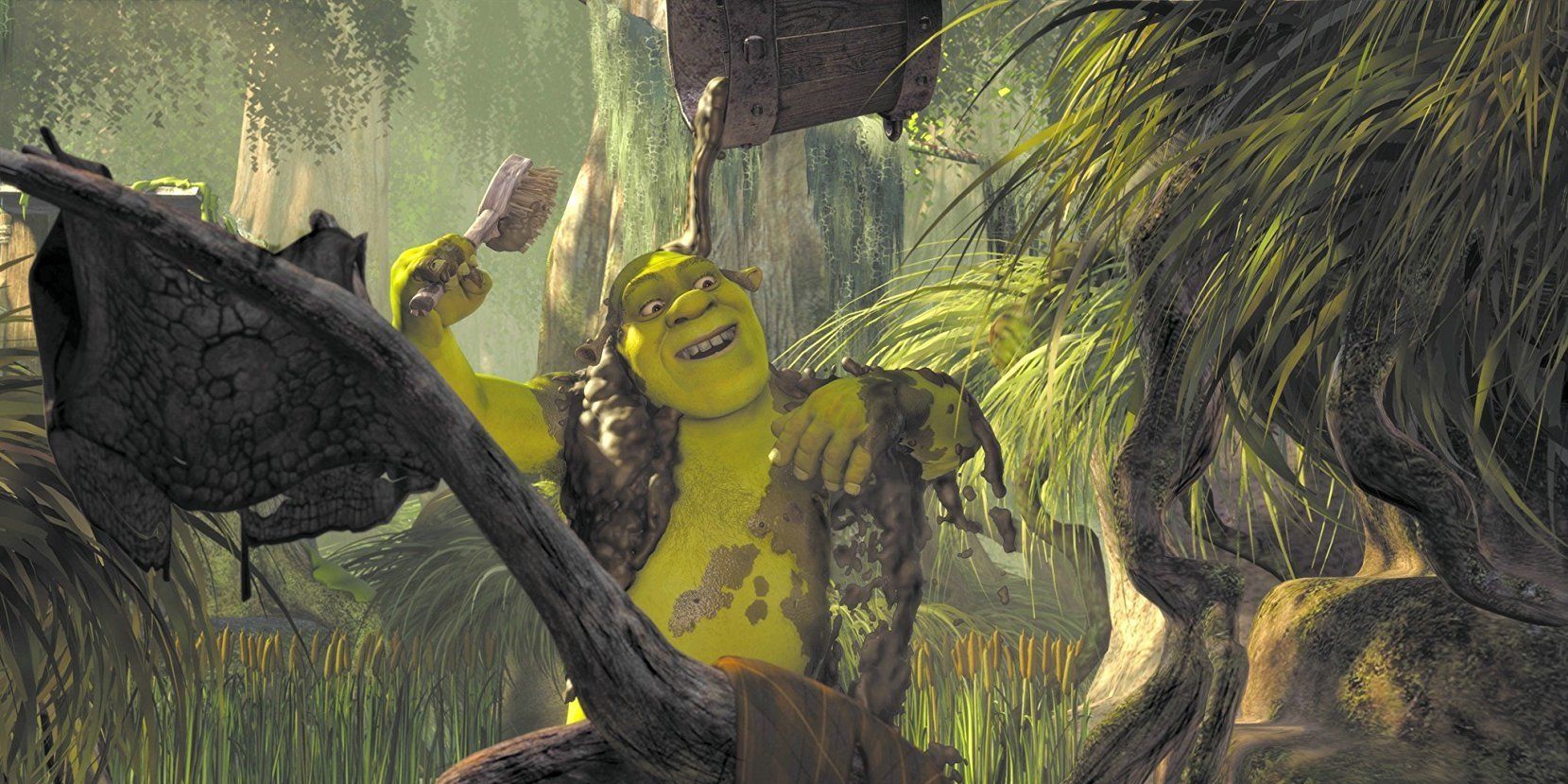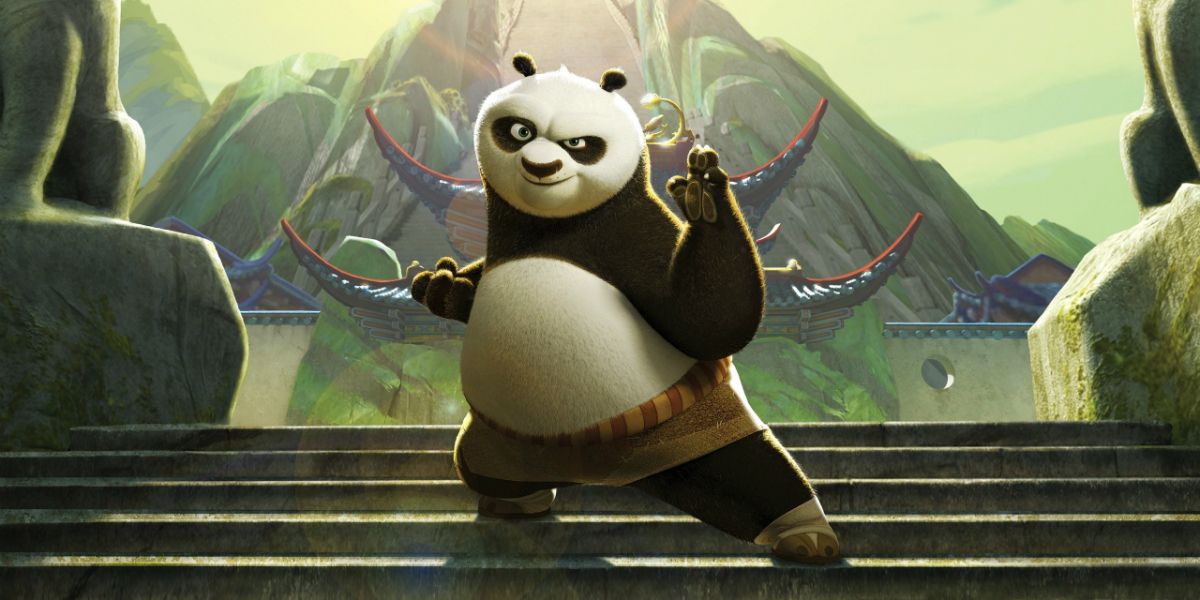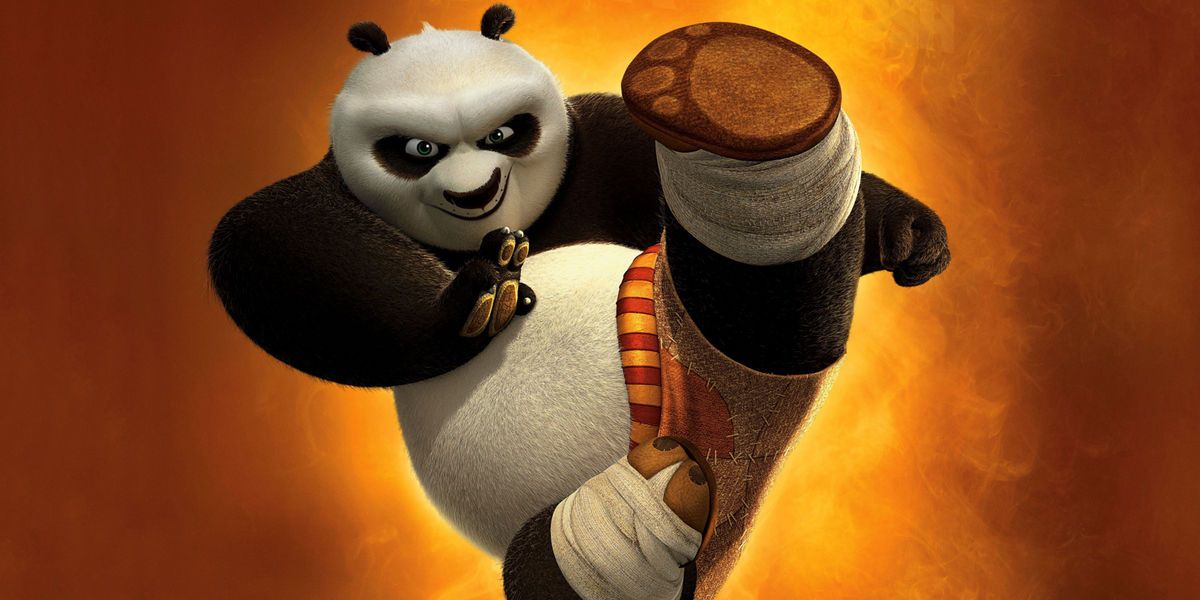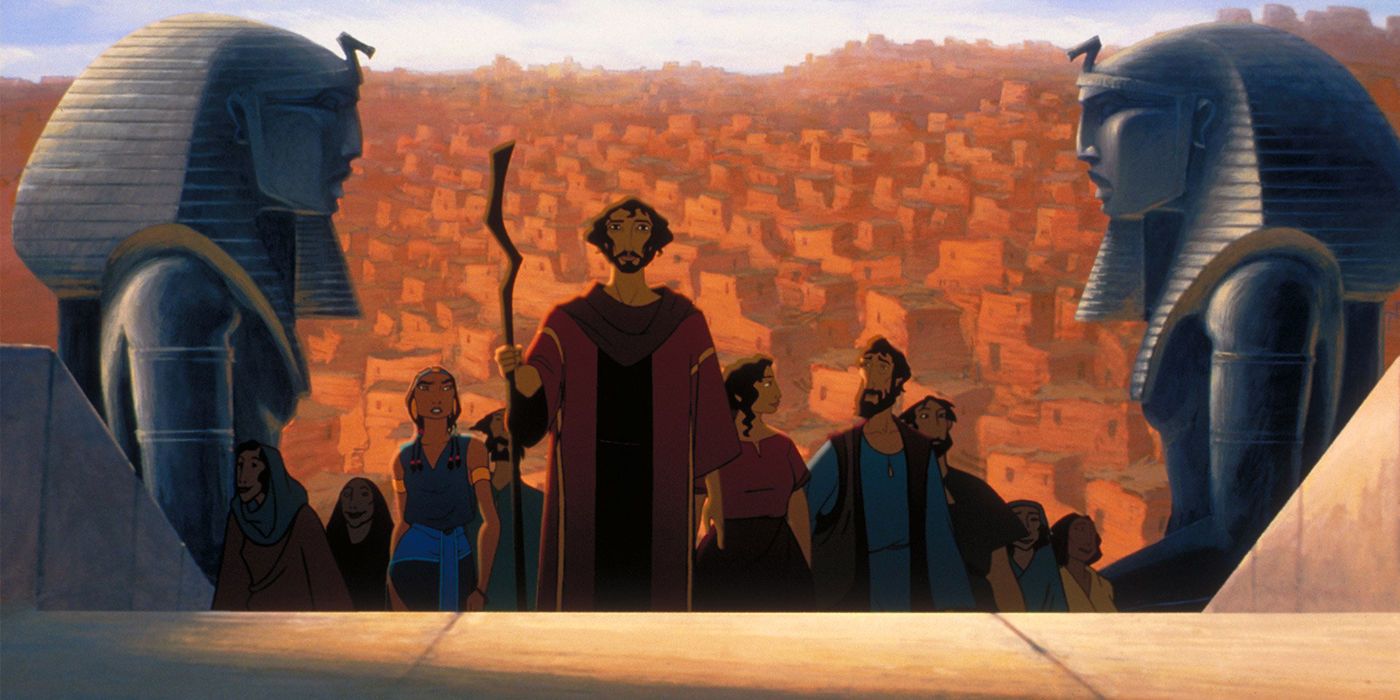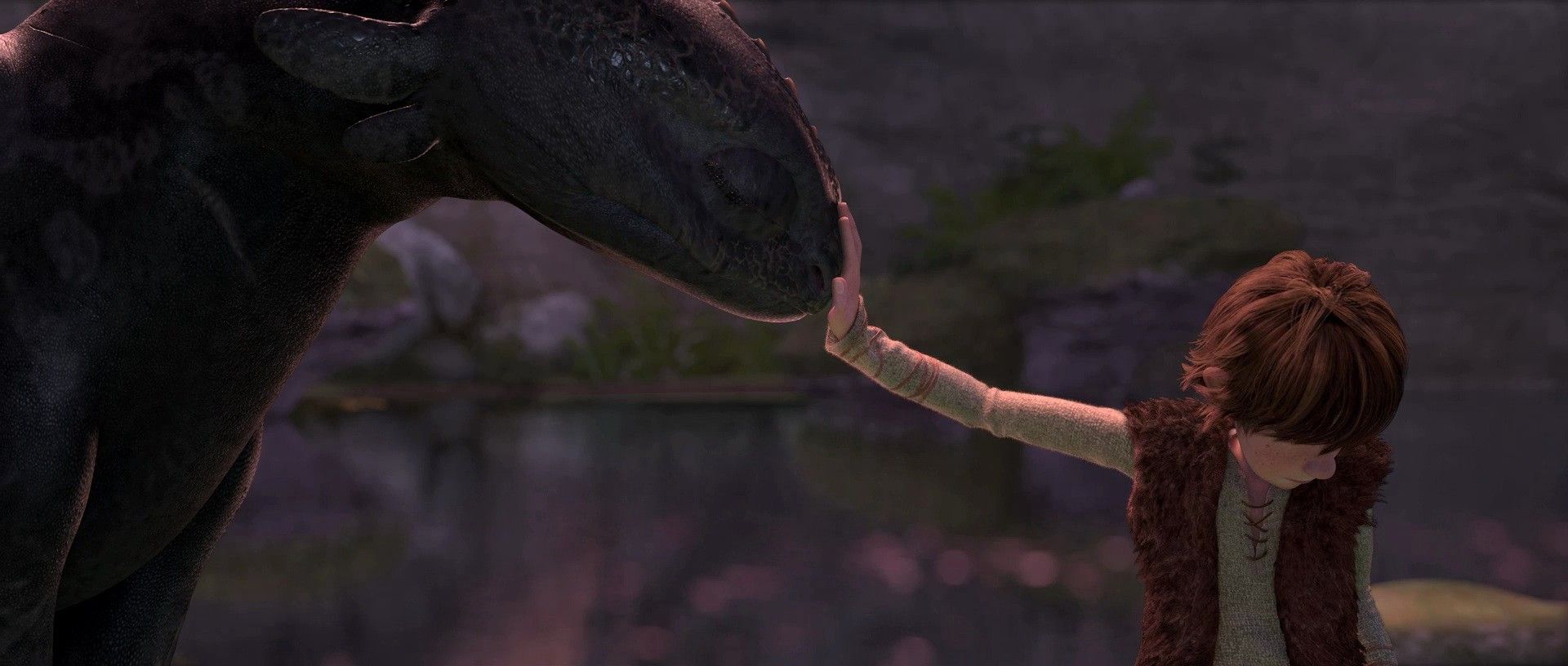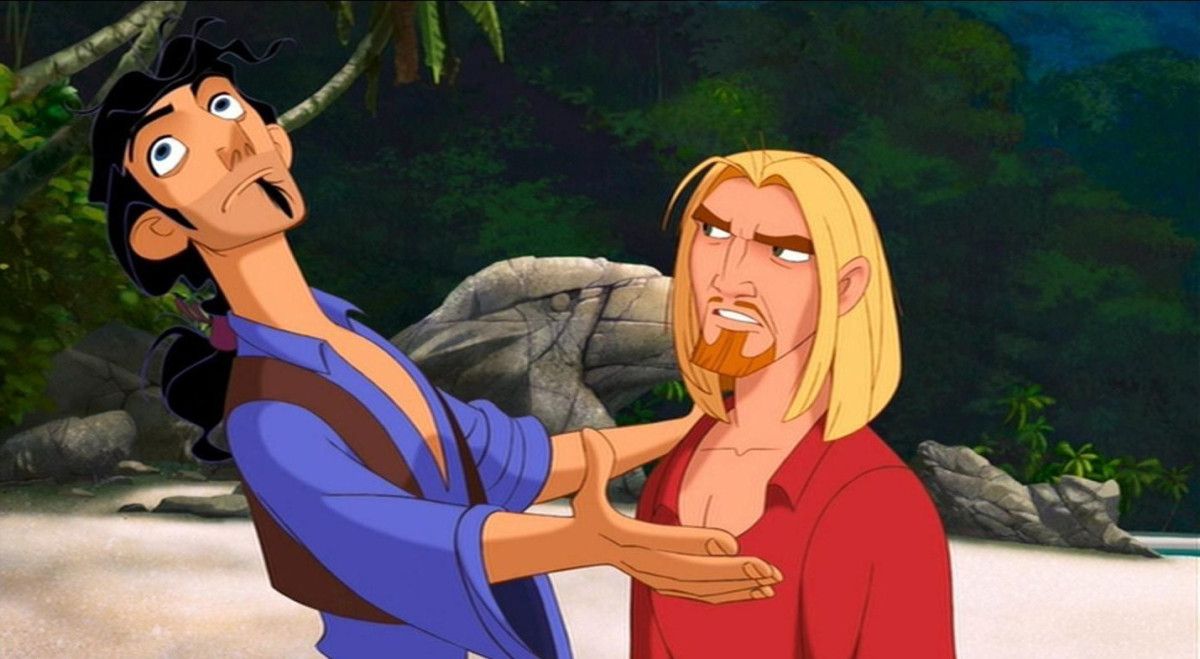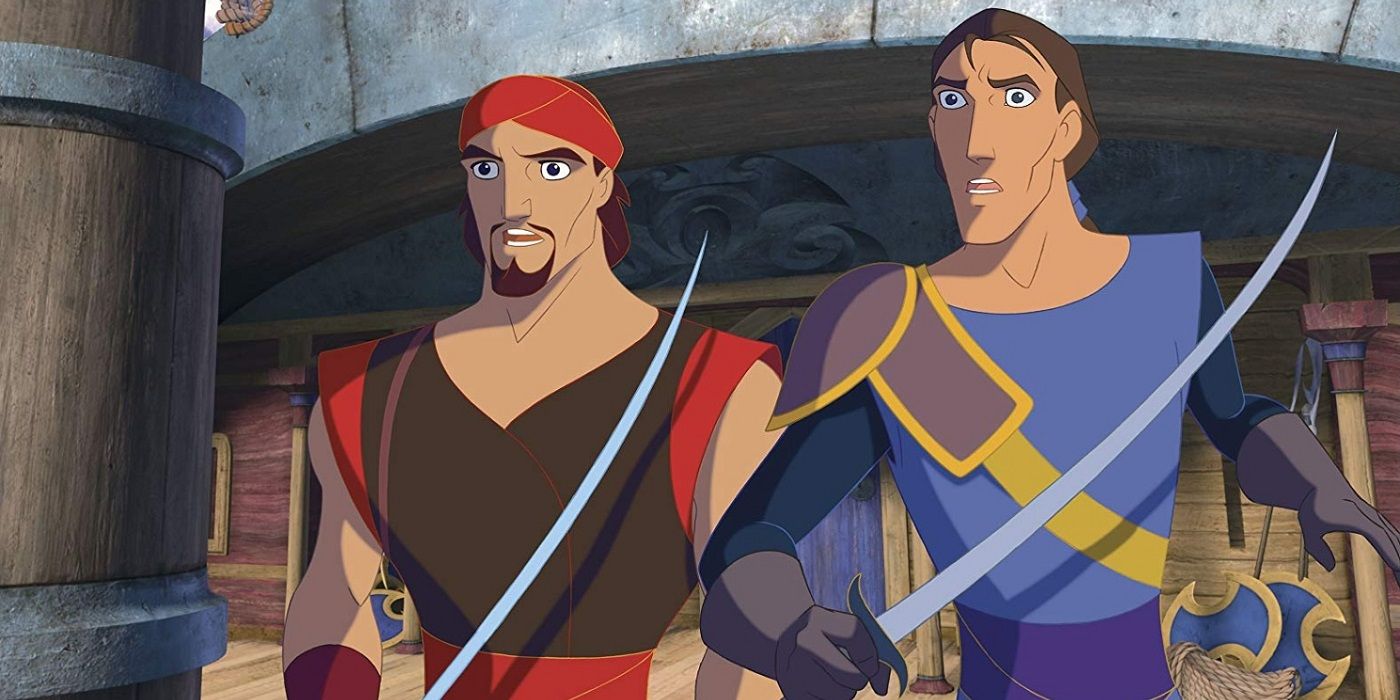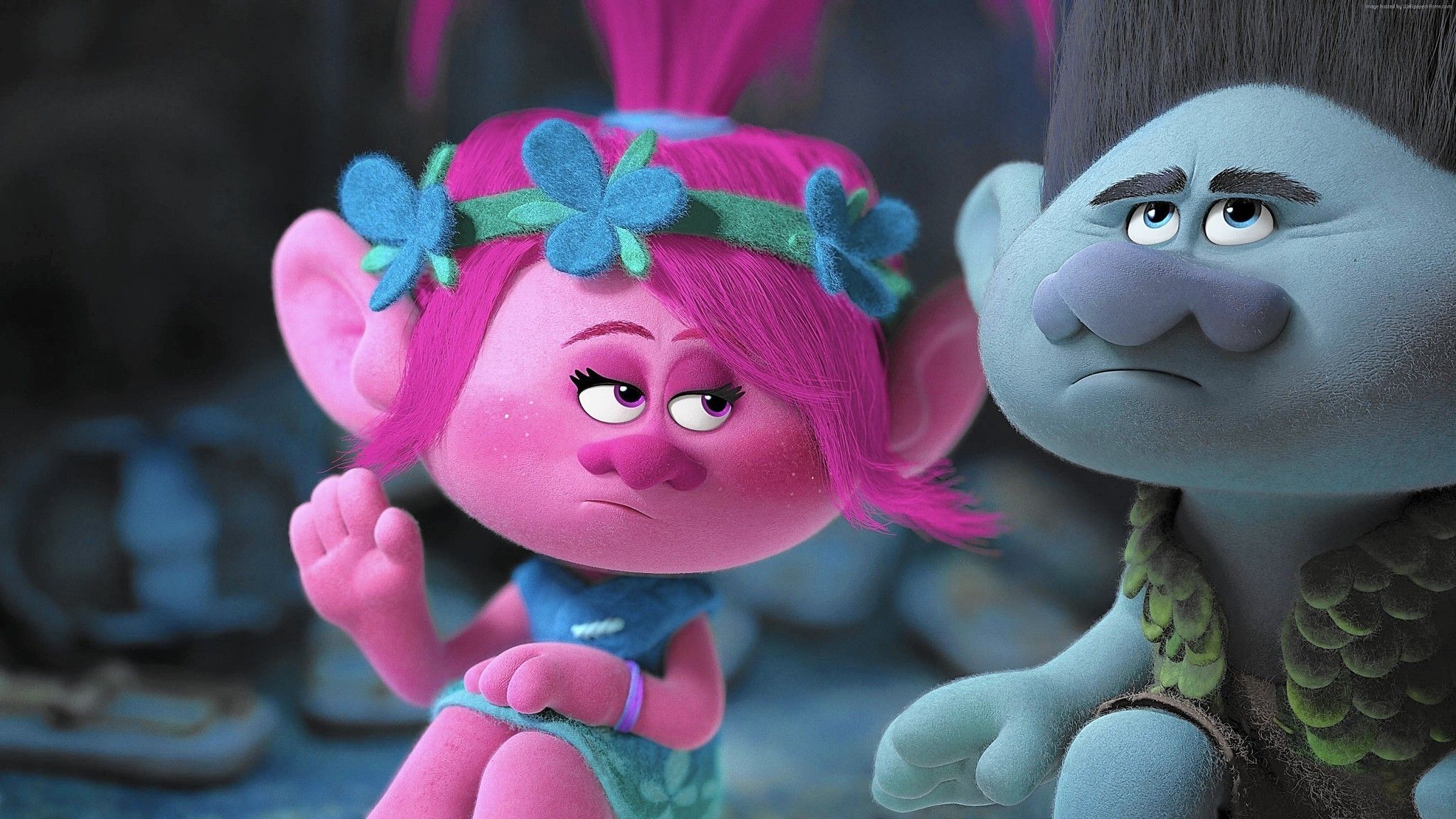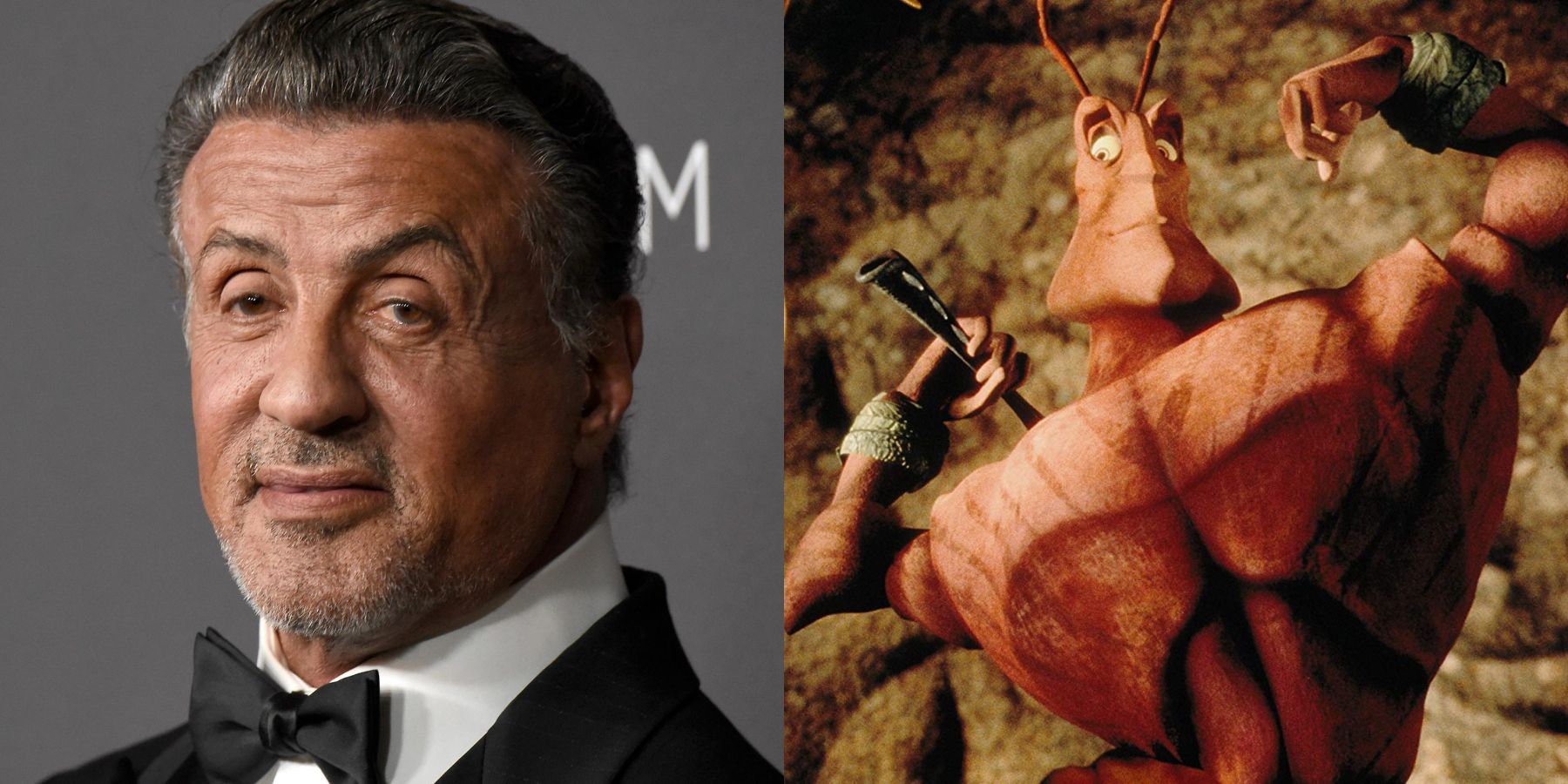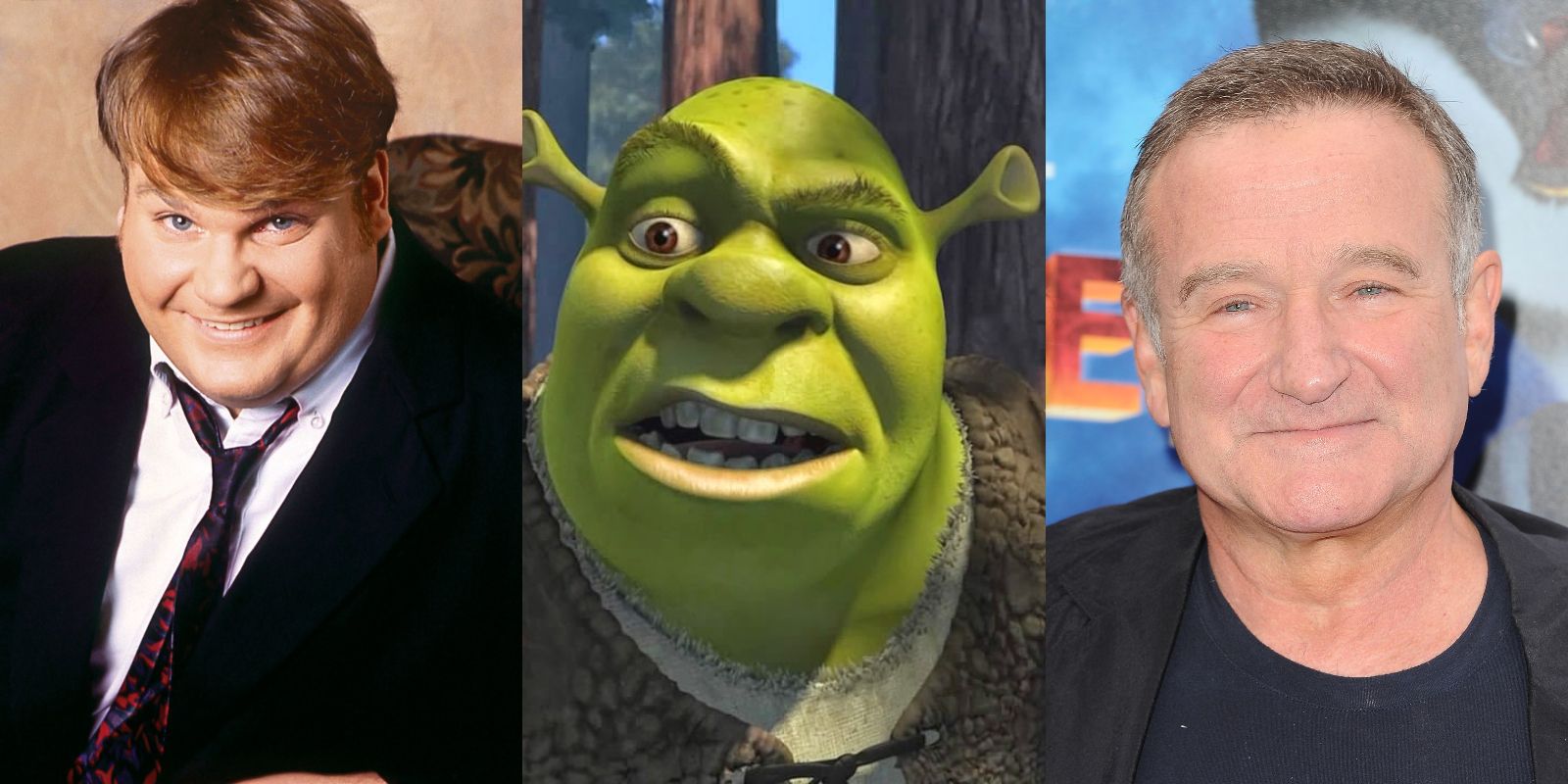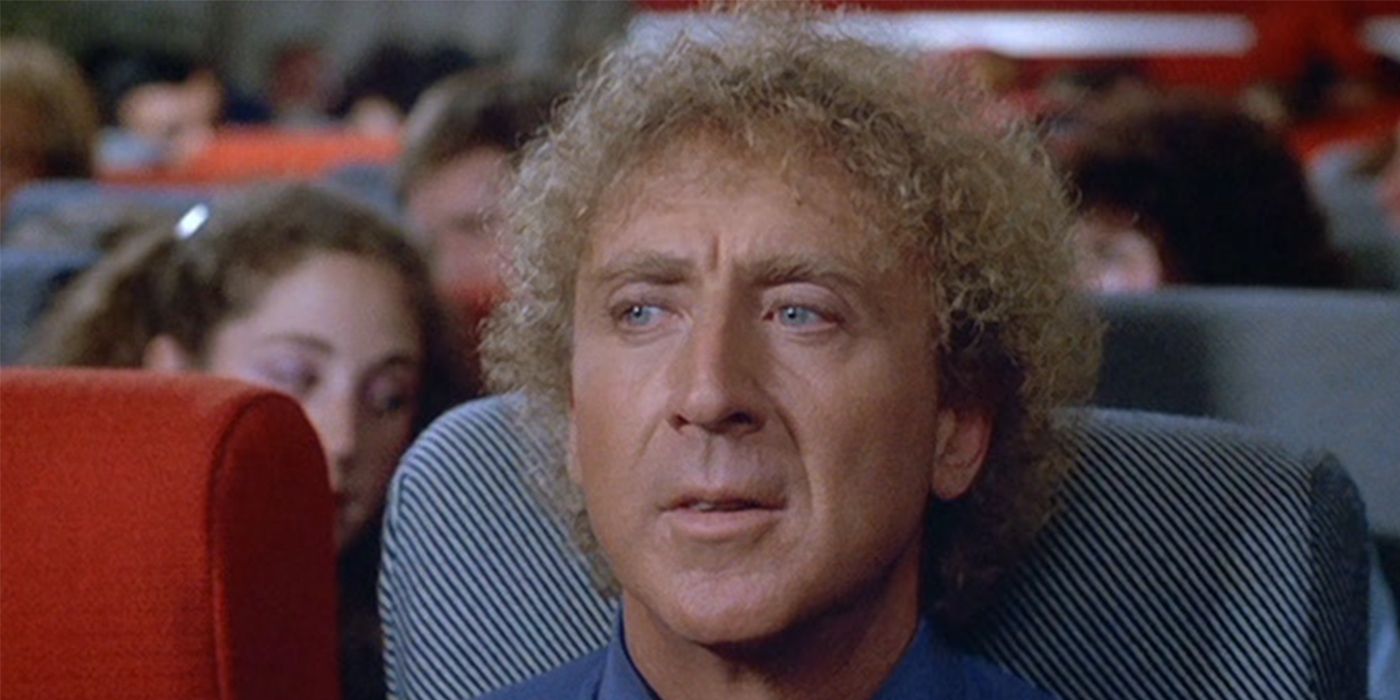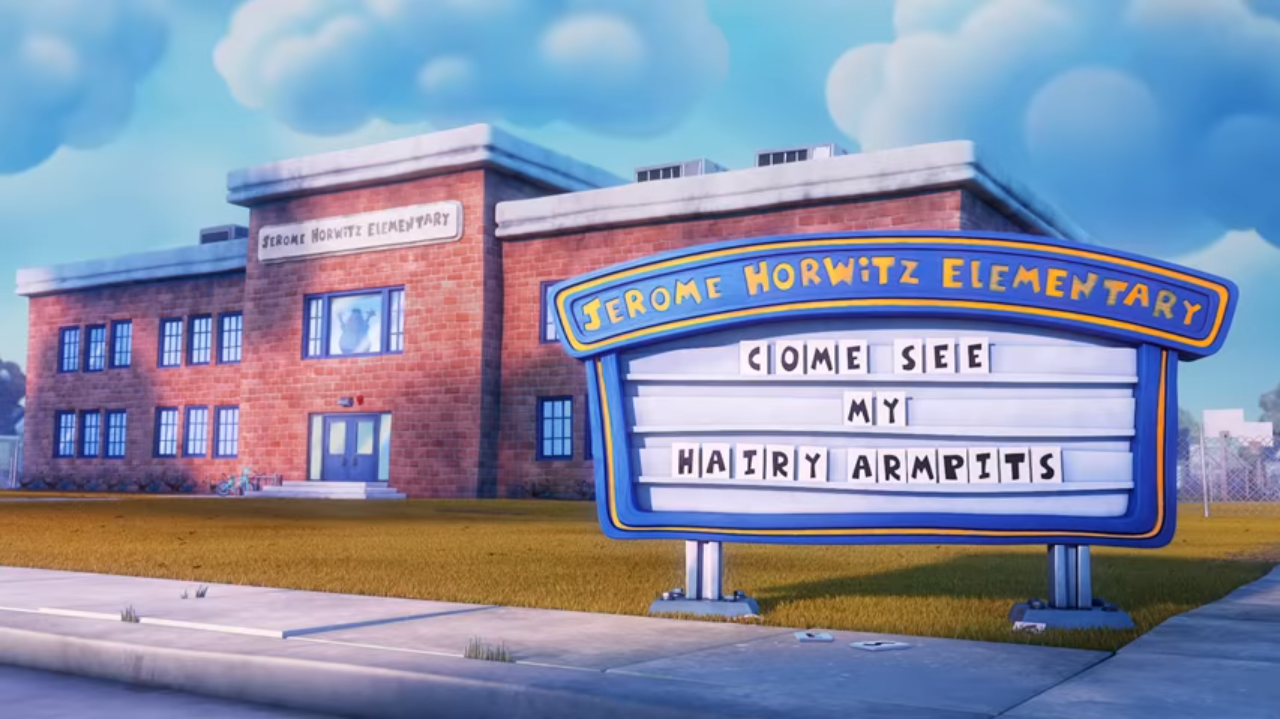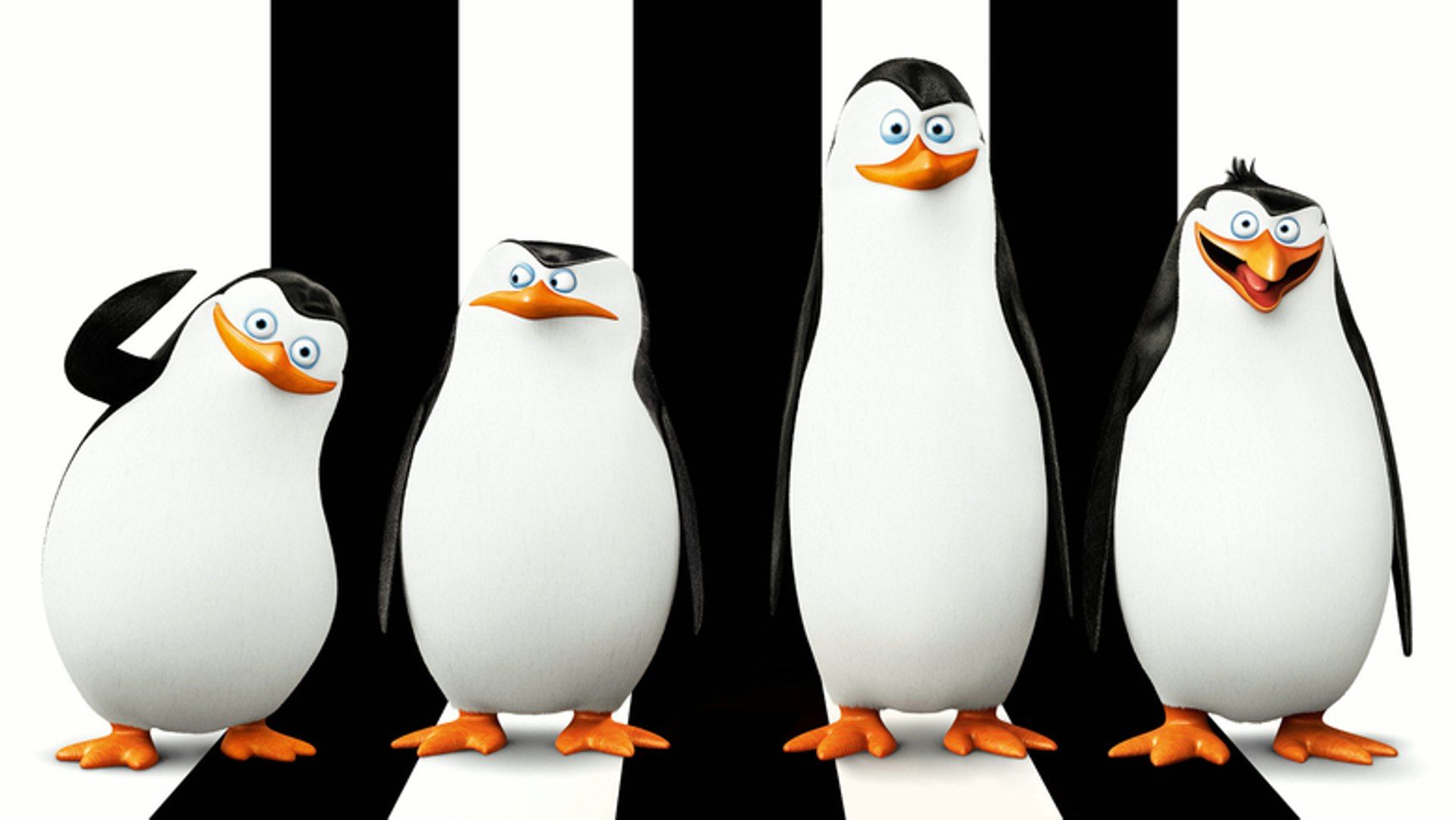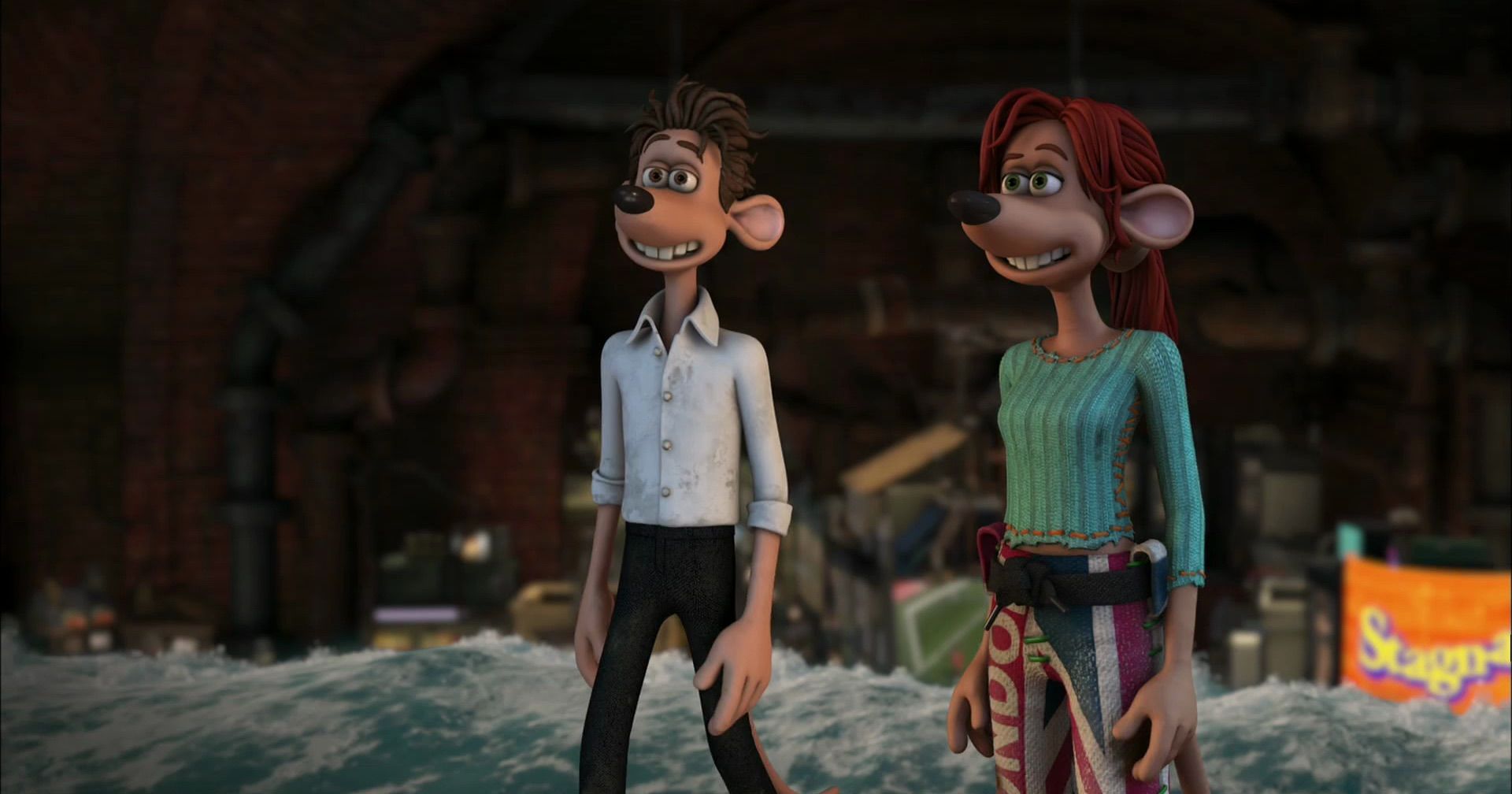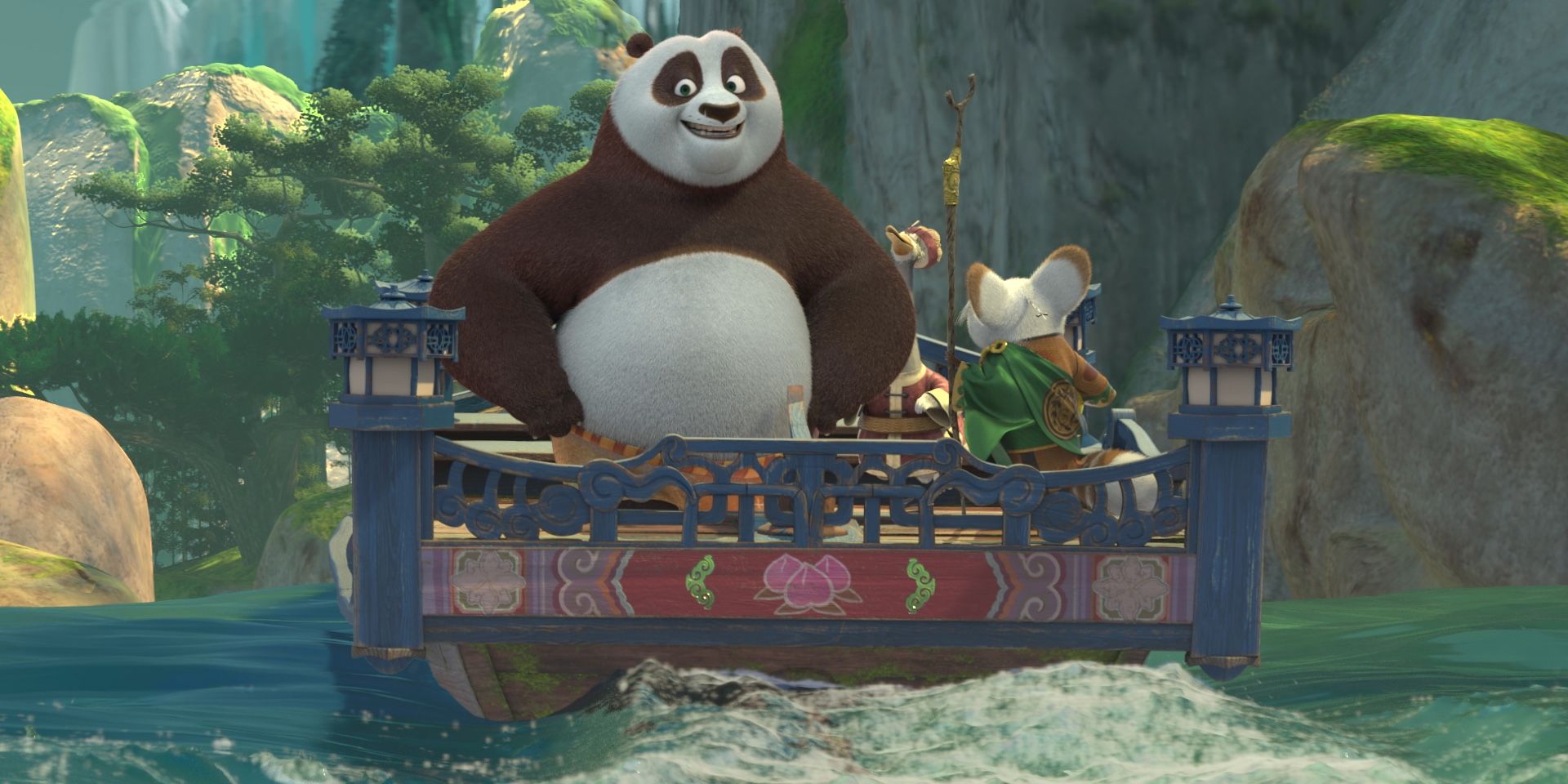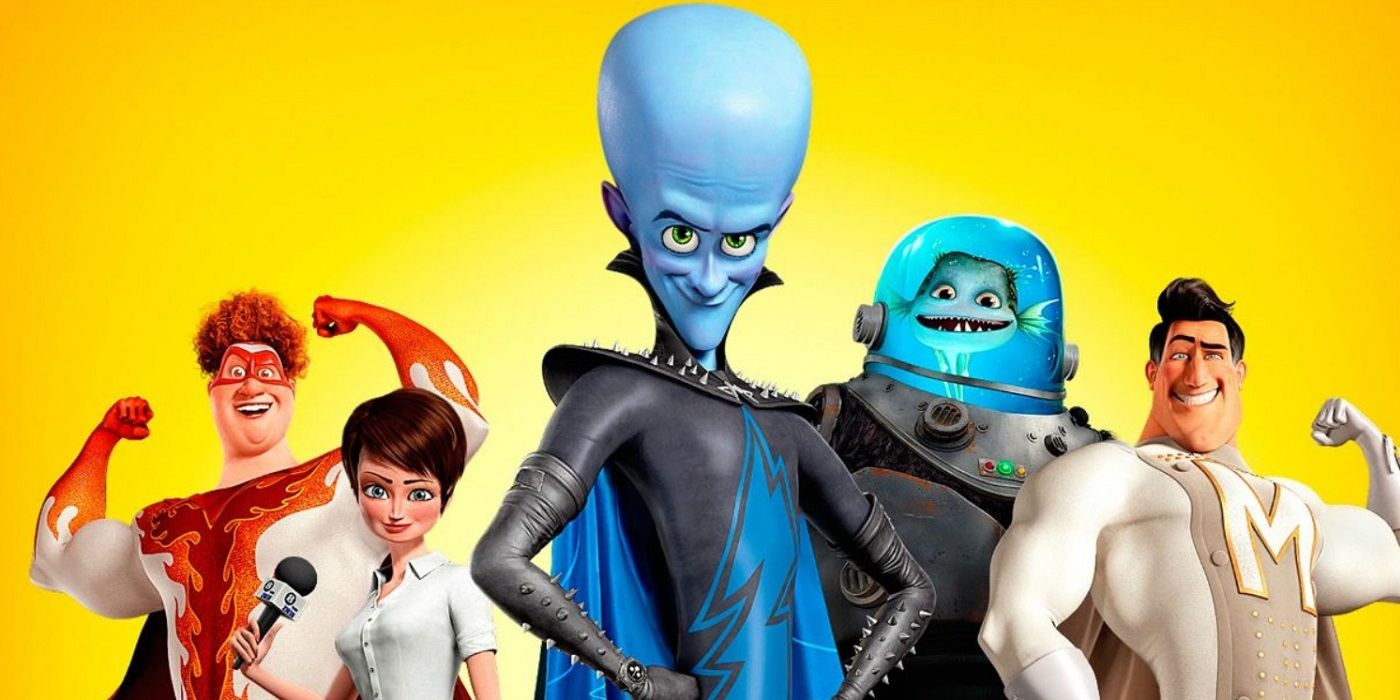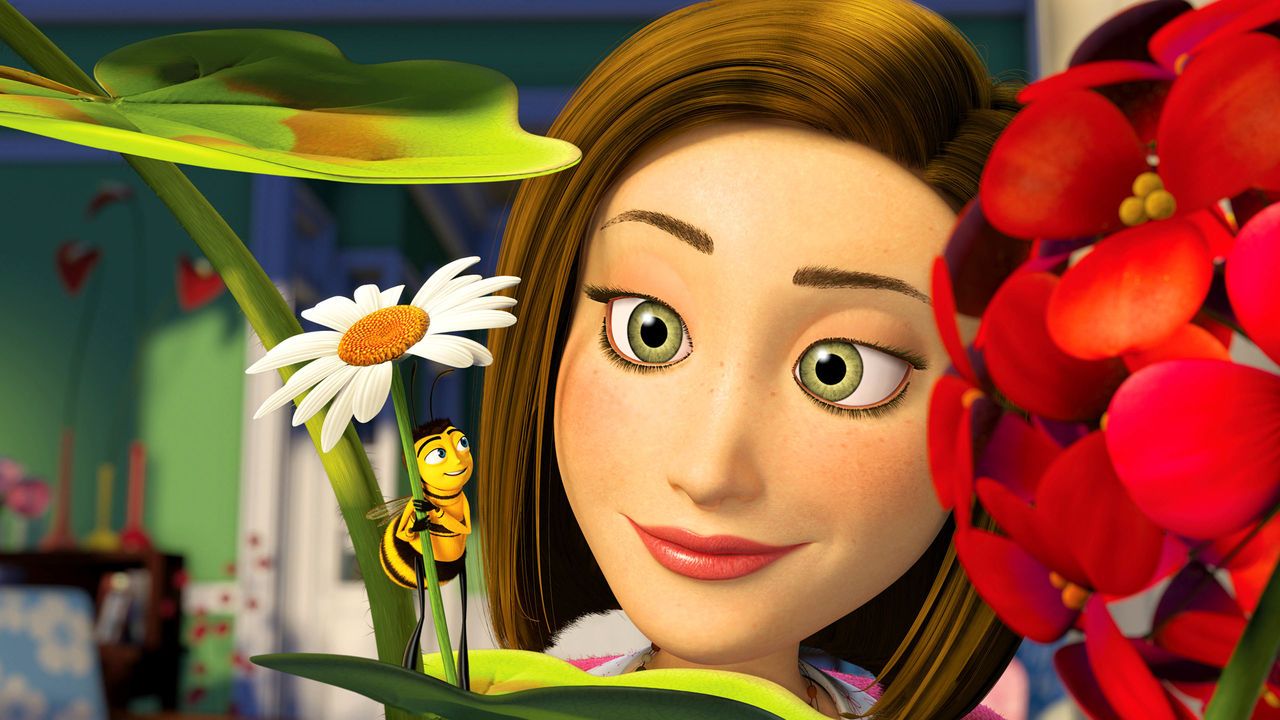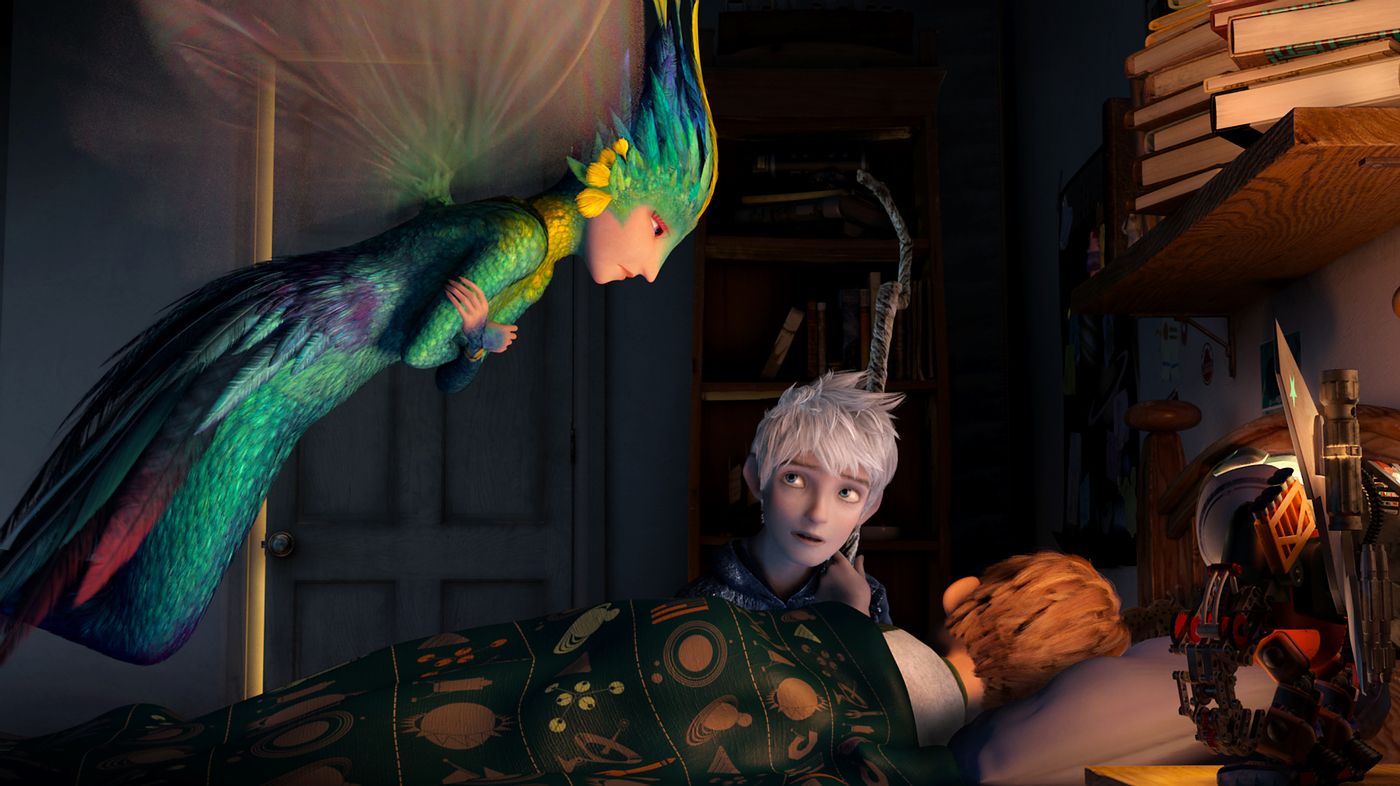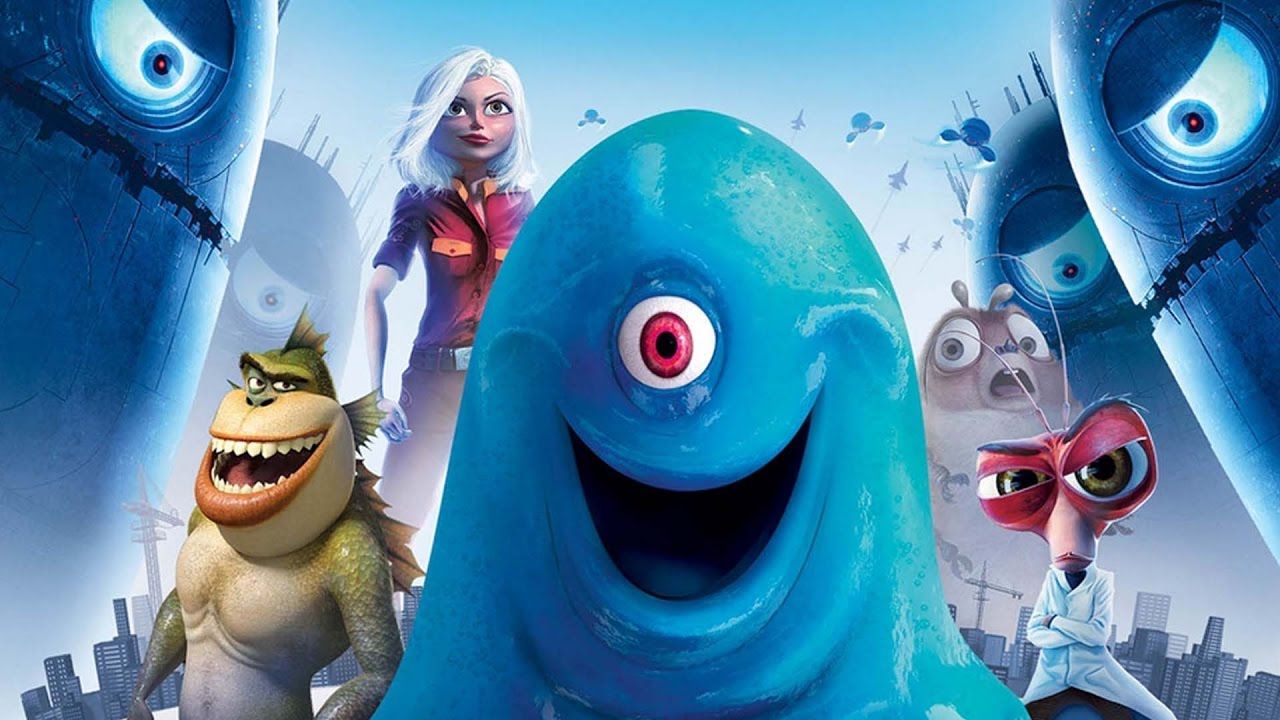When people think of animated films, particularly computer animated films, they immediately jump to Pixar as leading the pack. While Pixar films definitely have a certain amount of quality to them, there is something to be said about the animated films of DreamWorks. Ever since they first released Antz back in 1998, DreamWorks has consistently moved forward in making computer animated films with a lot of heart, unique stories, and all-star voice casts. Some of these films have rightfully gone on to become classics of the genre, while others might have fallen a bit flat with audiences and critics (looking at you, Shark Tale). In addition to their computer animated films, however, DreamWorks has also produced films that are traditionally animated, as well as two that were created using stop-motion claymation.
Considering how many DreamWorks films there are, it's not surprising to learn that there is an immense amount of work that goes into making each film unique and special. While Pixar still gets the most credit for their creative stories and emotional moments, DreamWorks is still just doing their own thing, making films that never feel like an imitation of their competition. DreamWorks animated films have a very specific storytelling style that is all their own. As mentioned previously, not all of their films have been major successes, but the fact of the matter is that it is not because of any lacking effort. The animators, directors, writers, and voice actors who work on DreamWorks films are committed to making great films, and the stories behind the scenes are often very interesting. These are 20 wild details about the making of DreamWorks animated films!
Shrek's accent cost the film $4 million
Of all the Dreamworks animated films, Shrek is by far the most fondly remembered. The story, based on a children's book, about an ogre who eventually becomes the hero of an entire kingdom, all so he can save his precious swamp, has produced a massive fandom.
One of the character's most defining features is his Scottish accent, provided by comedian Mike Myers. However, Shrek's voice was originally just an exaggerated Canadian accent. After seeing some of the footage, and realizing he wanted to do things differently, Myers requested he re-record all of his lines, a move that cost the production $4 million. Luckily, the film was a massive hit.
The Shrek team took mud showers
In the early days of computer animation, teams of animators were still trying to figure out the best ways to make things look natural. After all, computer animation, as opposed to traditional cel animation, could create a much lusher and fully realized world in which to work.
So what lengths did the animators have to go in order to get everything just right? They took mud showers. Just like Shrek's titular ogre does in the film, the animators also had mud poured over them in order to study the fluid dynamics of it and animate it properly.
The Kung Fu Panda animators took a kung fu class
Remember when we said that animators would go to great lengths in order to make something look right? Well, they may have had to take mud showers for Shrek, but they got to do something far cooler to prepare for the making of Kung Fu Panda: they took an actual kung fu class.
This was, presumably, done in order to get the movements of the characters just right, especially considering how each character used a specific style of kung fu. The class paid off, as Kung Fu Panda was a huge hit and one of Dreamworks' best-reviewed movies.
Po uses Bear-style kung-fu
Remember how we said that each animal in Kung Fu Panda used a specific style of kung fu? Well, each one actually used the style pertaining to what they were. For example, Mantis was using mantis style, while Monkey used Monkey style. However, as anyone familiar with the art of kung fu can tell you, there is no panda style.
Not that it was an issue, because Po actually used straight up bear style kung fu. Bear style kung fu is somewhat similar to Tiger style, although it incorporates a lot more grappling into it. Po obviously was able to master this style very well, which came in handy when facing off against Tai Lung.
The Prince of Egypt is actually banned in Egypt
The Prince of Egypt was the second Dreamworks animated film ever made, and it told the classic tale of Moses and how he led the slaves out of Egypt. It's a classic story and one that has been told many times, from the classic film The Ten Commandments to the special Passover episode of Rugrats.
However, not everyone in the world was as excited to see this story being told on the big screen. Despite the mostly positive critical response, the film was still banned in Egypt (as well as Malaysia and the Maldives). This was due to the depiction of Moses, which goes against one of the tenets of Islam.
An animation glitch became an emotional moment in How To Train Your Dragon
How To Train Your Dragon has become another one of Dreamworks' certified hits, spawning a trilogy of films that is celebrated for its imaginative storytelling, character development, and animation. That last part is particularly interesting because in the first film, it's actually a problem with the animation that creates such an emotional moment.
When Hiccup is trying his best to connect with Toothless, the dragon will not even allow the young human to touch him. However, in a touching and sincere moment, Toothless hesitates just for a moment before finally pressing his nose against Hiccup's hand. As it turns out, that moment of hesitation was actually an animation glitch.
There were supposed to be sequels to The Road to El Dorado
Dreamworks followed up the success of its traditionally animated The Prince of Egypt with another traditionally animated film: The Road to El Dorado. The film starred Kenneth Branagh and Kevin Kline as two miscreants who come into possession of a map to El Dorado, the fabled city of gold.
The adventurers eventually reach their destination, where they are mistaken for Gods. The film was supposed to be followed by sequels that would see the adventurers (as well as their new companion) exploring even more mythical lands, but due to the negative reception of the film and underwhelming box office, the sequels were scrapped.
The studio ditched 2D animation after Sinbad
Although Dreamworks' first animated film was Antz, which was made with computer animation, the studio still wanted to explore traditional animation as a medium to tell a story. The Prince of Egypt ended up being a big hit, while The Road To El Dorado was not as beloved.
However, what really stopped Dreamworks from pursuing 2D animation any longer was their film, Sinbad: Legend of the Seven Seas. Though it starred Brad Pitt, Catherine Zeta-Jones, and Michelle Pfeiffer, the film was a total flop and a critical bust. Its utter lack of success led the studio to ditch traditional animation permanently.
Trolls has a possible allusion to George Orwell's 1984
While the Dreamworks film Trolls might just seem like a lighthearted, musical adventure featuring the voices of Anna Kendrick and Justin Timberlake, it turns out that the writers of the film managed to sneak in at least one reference to classic literature. Any avid readers might have actually noticed it.
In the film, there is a line spoken by one character that goes, "he who controls the trolls controls the kingdom." Now, this might just appear to be a simple line of dialogue, but it does seem to draw inspiration from George Orwell's 1984, which includes the phrase, "who controls the past controls the future. Who controls the present controls the past."
Sylvester Stallone provided his voice in Antz for free
Antz was the very first Dreamworks animated film ever made, and although some might consider it to be a pale imitation of A Bug's Life, it actually came out a month before the Pixar film. The film featured some pretty big stars, including Woody Allen, Christopher Walken, and even Sylvester Stallone.
Stallone, in fact, was very charitable to the film. His character was originally going to be voiced by Arnold Schwarzenegger, but the role went to Stallone instead after he said that he would do the work for free. The film was Stallone's first foray into doing voice work in an animated film.
Chris Farley and Robin Williams were both considered for Shrek
Long before Mike Myers landed the role (and presumably made a lot of money from it), there was another comedian who was being considered to play Shrek: Chris Farley. In fact, Chris Farley had even recorded lines for some test footage before he, unfortunately, passed away.
Robin Williams was being considered for another role in Shrek when the project was still in its earliest phases. However, Williams and Dreamworks executive Jeffrey Katzenberg never actually had a good working relationship, and Williams eventually decided to abandon the role altogether.
Gene Wilder turned down a role in Over The Hedge
Over The Hedge was practically the first animated film to be based on a series of syndicated comic strips. The movie followed the lives of woodland critters whose existence is thrown into jeopardy when a giant hedge is put up in their home, blocking them from the subdivision just on the other side.
The film features some pretty big names. Bruce Willis plays the main character, a wily raccoon who intrudes on the peaceful lives of the forest-dwelling animals, while Garry Shandling played his foil, a turtle who was all about being cautious. However, one actor who might have been featured (but turned down the role) was Willy Wonka himself, Gene Wilder.
The school in Captain Underpants is named after one of the Three Stooges
Captain Underpants: The First Epic Movie is based on the series of hilarious kids' books by author Dav Pilkey. It tells the story of two best friends, whose comic book character comes to life when their principal is hypnotized into thinking that he is actually Captain Underpants.
Obviously, a movie like this is loaded with hilarious moments and is built on a solid background of comedy. That may be why the school attended by the main characters is actually named after one of the three stooges. Jerome Horwitz Elementary gets its name from the real name of stooge Curly Howard.
Penguins of Madagascar has nods to the creator of The Twilight Zone
Penguins of Madagascar was the spin-off film that needed to be made. Ever since their first appearance in Madagascar, the wily penguins of the Central Park Zoo had been providing some extra comic relief, due to their zany schemes and militaristic organization.
In their own film, the penguin crew embarks on yet another adventure, loaded with a lot of cartoonish hijinks and some truly great voice performances (including a silly turn from John Malkovich)! Though the film was ostensibly aimed at kids, it had some great references to the work of Rod Serling, who created The Twilight Zone.
Flushed Away used software to replicate claymation
One of the best things that DreamWorks did was teaming up with Aardman animation in order to make the films Chicken Run, Wallace and Gromit: Curse of the Were-Rabbit, and finally, Flushed Away. In fact, that last film marked an important transition for Aardman, as it was the first of their projects to be made using computer animation.
Of course, that didn't change the overall aesthetic of their work. The characters still had the same appearance as many of their past claymation heroes. In fact, the animation team used software they specially developed for Were-Rabbit that recreated the imperfections of claymation, in order to give the film a similar feel.
The animators on Kung Fu Panda were given fortune cookies for finishing scenes
There's nothing like positive reinforcement to get people to work harder and actually enjoy what they are doing. This was something that DreamWorks took to heart when making Kung Fu Panda. Animating a film of its scope can be truly difficult and time-consuming, so the company came up with a way to keep the animators motivated.
Every time an animator finished a scene they were working on, they were rewarded with (what else?) a fortune cookie. Inside, the fortunes were customized for each animator. We're sure this helped them to feel like they were actually accomplishing something great.
Megamind had a team of animators working solely on the capes
Megamind came out at just the right time. As superhero fever was reaching its highest point ever, DreamWorks released this film about a supervillain who discovers that without having a hero to fight against, his life becomes devoid of meaning. The hilarious film starred Will Ferrell, Brad Pitt, and Tina Fey.
While there were plenty of big action sequences in the film that would have required a lot of work and attention to detail, one team of animators was actually working on just one aspect of the entire film: capes. They had to make sure that every cape that appeared in the film moved naturally.
Bee Movie was pitched as a joke by Jerry Seinfeld
Bee Movie might have the weirdest legacy of any DreamWorks film. It was conceived and co-written by comedian Jerry Seinfeld, and since its release, it has been remixed into many a number of different memes. While Shrek seems to have the same honor, Bee Movie was the first DreamWorks film to receive this treatment.
What's actually funny about people not taking the movie seriously at all or even remembering it on its own merits is the fact that it was originally pitched as a joke. Seinfeld was having lunch with Steven Spielberg and brought the story up because he thought it was funny, not because he seriously wanted to make it. The rest is history.
Leonardo DiCaprio almost did a voice in Rise of the Guardians
Leonardo DiCaprio is known for taking on challenging projects, ones that really push his limits as an actor. It's the kind of attitude that won him his first Oscar for The Revenant. DiCaprio is not usually one to do light movies, particularly ones made for kids, but he almost did that exact thing with DreamWorks.
Rise of the Guardians is a mostly forgotten DreamWorks movie about holiday figures like Santa Claus and the Easter Bunny coming together to save the world from Jack Frost. It's an odd story, but it almost featured DiCaprio as Jack Frost. However, he dropped out of the film before it went into production.
Monsters vs Aliens is partly set in George Lucas's hometown
Monsters Vs. Aliens is a fun DreamWorks film that pays homage to the monster films of the 1950s and early 60s. After a woman grows almost 50 feet tall, she is introduced to a collection of other monsters that have been taken and kept in captivity by the military. Then, these monsters are set free to fight against an alien invasion.
The film owes a lot to the cinema of the past, and it also owes a lot to people like George Lucas. In fact, the film even gives a nod to Lucas in the form of being set in his hometown of Modesto, California. This setting gives the movie a nice, vibrant look, and really helps to ground a lot of the action in a world that is familiar to audiences.

